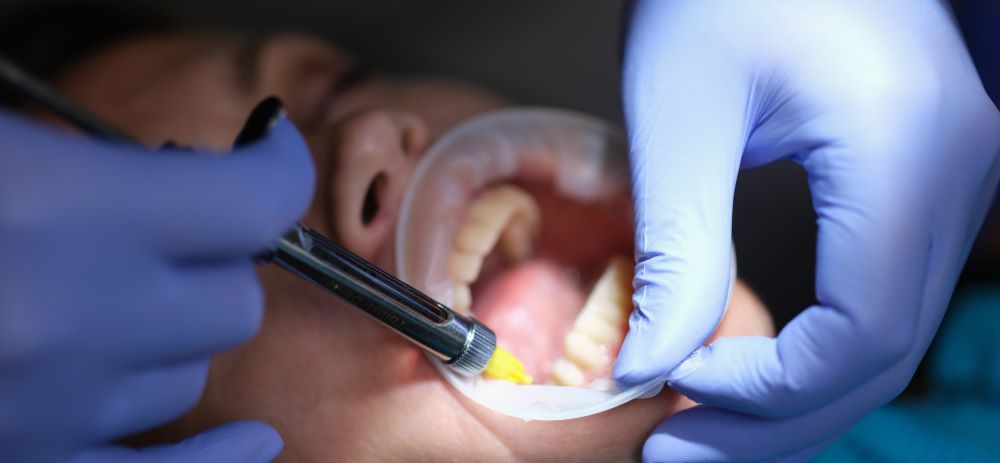
Are you anxious about dental visits? You’re not alone. Many people experience dental anxiety, which can prevent them from getting necessary dental care. Thankfully, dental sedation can help. This blog explores four types of dental sedation that make dental procedures more comfortable and stress-free. Whether you’re curious about nitrous oxide or general anesthesia, you’ll learn how each option works to ensure a serene dental experience.
Understanding What is Dental Sedation?
Dental sedation refers to the use of medication to help patients relax during dental procedures. It’s important to note that sedation is different from anesthesia. While anesthesia blocks pain, sedation focuses on relaxation. Different levels of sedation are available, ranging from minimal to deep sedation. The choice of sedation depends on the procedure, patient preference, and medical history. Sedation dentistry is a safe and effective way to enhance patient comfort during dental treatments. It fosters a calming environment, promoting better dental health outcomes.
Discovering 4 Common Types of Dental Sedation
In this section, we’ll delve into four common types of dental sedation that can significantly transform your dental experience. Each type of sedation meets different needs, ensuring that all patients can feel at ease, regardless of the procedure. By understanding these options, you can make informed decisions about which method best suits your comfort levels and dental needs.
Nitrous Oxide
Nitrous oxide, also known as laughing gas, is a popular sedative used in dental practices. Its primary benefit is its ability to induce a state of relaxation while keeping the patient awake. This makes it ideal for those with mild anxiety. Administered through a mask, the effects of nitrous oxide are quickly felt. Patients often describe a sense of calmness and mild euphoria. An advantage of nitrous oxide is its rapid onset and recovery time. After the procedure, its effects wear off quickly, allowing patients to resume normal activities promptly.
Oral Sedation
Oral sedation offers a convenient way to achieve deeper relaxation. Typically administered in pill form, it’s taken before the appointment. This method requires a bit of preparation, as patients need someone to accompany them to and from the dental office. Oral sedation is suitable for those who need more than minimal sedation, but don’t require IV sedation or general anesthesia. Its effects can vary from mild drowsiness to moderate sedation, depending on the dosage. Patients often find oral sedation to be an effective way to ease anxiety and enhance comfort during dental procedures.
IV Sedation
IV sedation provides a deeper level of sedation compared to nitrous oxide or oral sedation. Delivered intravenously, this method allows the dentist to adjust the sedation level as needed. IV sedation is commonly used for longer or more invasive procedures. It helps patients remain calm and comfortable throughout the treatment. Despite its depth, IV sedation maintains a level of consciousness, allowing patients to respond to instructions, though they may have little memory of the procedure afterwards. This type of sedation requires careful monitoring to ensure safety and effectiveness.
General Anesthesia
General anesthesia is used for the most extensive and complex dental procedures. Unlike other sedation types, general anesthesia induces complete unconsciousness. It’s usually reserved for surgeries or patients with special needs. Administered by an anesthesiologist, general anesthesia requires thorough preparation and post-procedure monitoring. It’s important to discuss any medical concerns with the dental team beforehand. While under general anesthesia, patients feel no pain and have no recollection of the procedure, ensuring a pain-free experience for complex treatments.
Choosing the Right Sedation for You
Choosing the right type of dental sedation depends on several factors. Consider the procedure’s length and complexity, your anxiety level, and medical history. Consult with clinics like The Mint Dental, which offers different types of sedation, and have licensed dentists that can help you evaluate these aspects to recommend the best sedation option. Open communication with your dental team is crucial in making an informed decision. Understanding your comfort level and discussing any concerns helps tailor the sedation plan to your needs. By selecting the appropriate sedation, you ensure a smooth and comfortable dental experience.
Final Thoughts
Dental sedation offers a practical solution for overcoming dental anxiety and ensuring comfortable dental visits. From nitrous oxide to general anesthesia, each type caters to varying levels of anxiety and procedural needs. Understanding the options available empowers patients to make informed decisions about their dental care. By addressing anxiety, sedation encourages regular dental appointments, leading to better oral health.